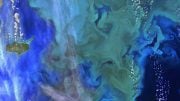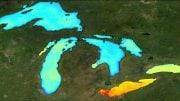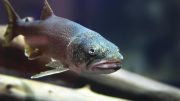
A recent study found no evidence for the existence of two alternative stable states in shallow lakes, debunking a widely accepted theory in limnology.
Research conducted by the UFZ and Aarhus University provides new insights that challenge the prevailing theory on the ecology of shallow lakes.
According to the study of inland waters, known as limnology, a theory of ecological equilibrium suggested that shallow lakes can take on two alternative stable states. However, this paradigm has been challenged by recent research conducted by the Helmholtz Centre for Environmental Research and Aarhus University in Denmark. The findings have been published in the journal Nature Communications.
The research team conducted a data analysis on 902 shallow lakes and found no support for the theory of two alternative stable states. The authors of the study are skeptical of lake management practices that are based on this theory and call for a greater focus on reducing nutrient inputs in order to maintain the ecological balance of shallow lakes.
Roughly 42 percent of lakes worldwide are so-called shallow lakes with an average depth of up to three meters.
“Shallow lakes are highly important bodies of water for us humans: They provide us with water for drinking, for fishing, and for recreational activities. A good ecological state is crucial for this,” says last author Dr Daniel Graeber from the UFZ Department of Aquatic Ecosystem Analysis and Management. “Because shallow lakes are usually fed from surface waters, they often receive increased inputs of nutrients. This can easily throw off their ecological equilibrium.”
According to a theory developed in the 1990s and broadly accepted in limnology, shallow lakes should be able to independently oscillate between two alternative stable states with the same nutrient availability: One condition is characterized by turbid water dominated by phytoplankton and the other by clear water and abundant aquatic plants.
“The theory also says that these two states each exhibit long-term stability following a change,” explains Dr. Thomas A. Davidson, a limnologist at Aarhus University and lead author of the study. “Biomanipulative measures based on this explanatory model have already been implemented several hundred times in Europe and the USA to improve the ecological condition of lakes.”
The goal of such intervention: to counteract the effects of a high nutrient supply – increased growth of phytoplankton, oxygen deficiency, toxic blooms of blue-green algae and fish kills. The addition of piscivorous fish, for example, is intended to regulate the increased phytoplankton production via ecological feedback effects: Piscivorous fish eat prey fish, fewer prey fish eat fewer small crustaceans, and more small crustaceans eat more phytoplankton. In this way, a turbid shallow lake characterized by high phytoplankton growth, is to be moved to its second stable state – clear water with aquatic plants and spawning grounds for fish – with long-term stability despite a high availability of nutrients.
“That somehow sounds too good to be true,” says Graeber. “Over the past years, a few studies have already yielded initial indications that, in reality, this theory might only play a minor role. We wanted to investigate this in further detail and to give a reality check to this explanatory model of alternative stable states of shallow lakes that is widely accepted in limnology.”
To do this, the research team analyzed long-term monitoring data from 902 shallow lakes. The lakes were located in Denmark and the USA and were less than three meters deep. The researchers investigated the relationship between nutrient concentration and chlorophyll concentration (as a measure of phytoplankton biomass) in the lakes and its variation over time.
They developed a special statistical method to test whether alternative states occurred in the lakes and whether, as the theory predicted, they were also stable and self-sustaining over several years.
“We first used simulations to test whether our statistical method also actually works and whether it is even able to detect any alternative stable states. These simulations included scenarios with and without alternative stable states, and our method reliably detected the presence or absence of alternative stable states,” says the UFZ limnologist.
The results of the data analysis of the 902 lakes can therefore also be considered reliable: In the lakes studied, the research team found no indications whatsoever of the presence of two alternative stable states.
“What we were able to clearly establish is a pronounced linear relationship between nutrient concentration and phytoplankton concentration,” says Graeber. “So more nutrients inevitably lead to more phytoplankton. None of the lakes exhibited a different response to high nutrient concentrations. The explanatory model of two alternative stable states, therefore, does not appear to occur in reality – at least for lakes in the temperate zones.”
But what do these results mean in practice? How can we maintain the ecological equilibrium of shallow lakes?
“Biomanipulative measures such as adding piscivorous fish cannot stabilize the shallow lake ecosystem in the long term, because there is no alternative stable state,” says Graeber. “There is only one way to maintain the equilibrium of shallow lakes in a continuous stable state, and there’s no alternative: Nutrient inputs have to be consistently reduced.”
Reference: “Bimodality and alternative equilibria do not help explain long-term patterns in shallow lake chlorophyll-a” by Thomas A. Davidson, Carl D. Sayer, Erik Jeppesen, Martin Søndergaard, Torben L. Lauridsen, Liselotte S. Johansson, Ambroise Baker and Daniel Graeber, 25 January 2023, Nature Communications.
DOI: 10.1038/s41467-023-36043-9









Be the first to comment on "No Evidence – New Study Challenges Accepted Limnology Theory"